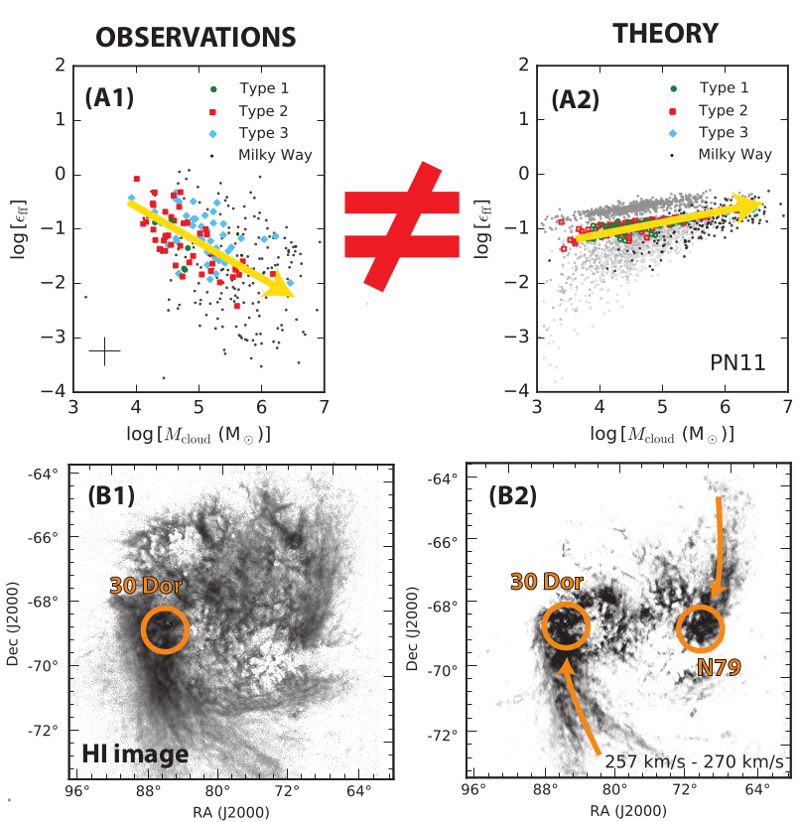| EPoS Contribution |
|
What Drives the Formation of Massive Stars and Clusters?
Bram Ochsendorf JHU, Baltimore, US | |
| Galaxy-wide surveys allow to study star formation in unprecedented ways. In this talk, I will discuss our analysis of the Large Magellanic Cloud (LMC) and the Milky Way, and illustrate how studying both the cloud and galactic scale structure of galaxies are critical in addressing the question: what drives the formation of massive stars and clusters? I will show that "turbulence-regulated" star formation models do not reproduce massive star formation properties of GMCs in the Milky Way, LMC, and M51: this suggests that theory currently does not capture the full complexity of star formation on small scales. I will also report on the discovery of a massive star forming complex in the LMC, which in many ways manifests itself as an embedded twin of 30 Doradus: this may shed light on the formation of R136 and 'Super Star Clusters' in general. Finally, I will highlight what we can expect in the next years in the field of star formation with large-scale sky surveys, ALMA, and our JWST-GTO program on nearby galaxies. | |
 | |
| Caption: Figure A1: the observed star formation per freefall time for clouds in the Milky Way (black dots) and LMC (colored dots). Figure A2: the predicted star formation per freefall time using observed cloud parameters and a "turbulence-regulated" star formation model (Padoan & Nordlund 2011). Observations and theory do not agree: specifically, the scatter and decline in star formation per freefall time are not reproduced (arrows are drawn to guide the eye). Figure B1 and B2: The discovery of N79, a younger, embedded twin to the 30 Doradus region in the LMC. Figure B1 shows the integrated HI intensity of the LMC, Figure B2 plots only a certain velocity range to bring out the tidal arms (arrows) of the LMC resulting from interactions with both the Small Magellanic Cloud and the Milky Way. Both 30 Doradus and N79 lie on the leading edge or tips of opposing tidal arms. At the heart of the N79 region lies the most luminous, compact infrared object observed in both the LMC and Milky Way. The discovery of the central luminous source in N79 suggest a link between the large scale dynamical structure of the LMC and the formation of its most massive star clusters (published in Nature Astronomy). | |
| Collaborators: J. Bally, UCB, US J. Chastenet, STScI, US N. Evans II, UTA, US R. Indebetouw, NRAO, US O. Jones, STScI, US M. Meixner, STScI, US I. Nayak, JHU, US J. Roman-Duval, STScI, US M. Rahman, JHU, US X. Tielens, UL, NL H. Zinnecker, DSI, DE |
Key publication
Suggested Session: Galactic-scale star formation |

